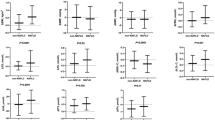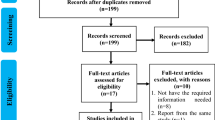Abstract
Aim:
Considering the characterization of vitamin D deficiency as a risk factor of ectopic fat deposition, the association of serum 25-hydroxy vitamin D3 [25(OH)D3] levels with non-alcoholic fatty liver disease (NAFLD) was evaluated in Chinese men with normal body mass index (BMI) and enzyme markers of liver function.
Methods:
A total of 514 participants (22 to 79 years old) with normal BMI and liver enzymes were identified for analysis. Abdominal ultrasound was performed to diagnose NAFLD, and the fatty liver index (FLI) was calculated to quantify liver steatosis. Serum 25(OH)D3 levels were determined by an electrochemiluminescence immunoassay.
Results:
Among the entire study population, the mean levels of serum 25(OH)D3 were 15.32±5.77 ng/mL. However, when serum 25(OH)D3 levels were compared between non-NAFLD subjects (n=438) and NAFLD subjects (n=76), the latter showed significantly lower levels (15.65±5.89 ng/mL vs 13.46±4.65 ng/mL, P=0.002). In addition, serum 25(OH)D3 levels were found to be significantly correlated with FLI after adjustment for age and BMI (r=−0.108, P=0.014). Logistic regression showed that serum 25(OH)D3 levels were independently correlated with NAFLD (OR: 0.937, 95% CI: 0.884–0.993, P=0.028). Furthermore, stepwise regression analysis revealed that serum 25(OH)D3 levels were inversely associated with FLI (β=−0.055, P=0.040).
Conclusion:
The present study demonstrated that serum 25(OH)D3 levels were inversely associated with NAFLD, even in subjects with normal total body fat, suggesting a potential role of lower levels of vitamin D in the occurrence and development of NAFLD.
Similar content being viewed by others
Log in or create a free account to read this content
Gain free access to this article, as well as selected content from this journal and more on nature.com
or
References
Hatse S, Lambrechts D, Verstuyf A, Smeets A, Brouwers B, Vandorpe T, et al. Vitamin D status at breast cancer diagnosis: correlation with tumor characteristics, disease outcome, and genetic determinants of vitamin D insufficiency. Carcinogenesis 2012; 33: 1319–26.
Ford ES, Ajani UA, McGuire LC, Liu S . Concentrations of serum vitamin D and the metabolic syndrome among US adults. Diabetes Care 2005; 28: 1228–30.
Kamen DL, Tangpricha V . Vitamin D and molecular actions on the immune system: modulation of innate and autoimmunity. J Mol Med (Berl) 2010; 88: 441–50.
Hao Y, Ma X, Shen Y, Ni J, Luo Y, Xiao Y, et al. Associations of serum 25-hydroxyvitamin D3 levels with visceral adipose tissue in Chinese men with normal glucose tolerance. PLoS One 2014; 9: e 86773.
Karelis AD, St-Pierre DH, Conus F, Rabasa-Lhoret R, Poehlman ET . Metabolic and body composition factors in subgroups of obesity: what do we know? J Clin Endocrinol Metab 2004; 89: 2569–75.
Uchil D, Pipalia D, Chawla M, Patel R, Maniar S . Narayani, et al. Non-alcoholic fatty liver disease (NAFLD) — the hepatic component of metabolic syndrome. J Assoc Physicians India 2009; 57: 201–4.
Kim HJ, Kim HJ, Lee KE, Kim DJ, Kim SK, Ahn CW, et al. Metabolic significance of nonalcoholic fatty liver disease in nonobese, nondiabetic adults. Arch Intern Med 2004; 164: 2169–75.
Targher G, Bertolini L, Scala L, Cigolini M, Zenari L, Falezza G, et al. Associations between serum 25-hydroxyvitamin D3 concentrations and liver histology in patients with non-alcoholic fatty liver disease. Nutr Metab Cardiovasc Dis 2007; 17: 517–24.
Liangpunsakul S, Chalasani N . Serum vitamin D concentrations and unexplained elevation in ALT among US adults. Dig Dis Sci 2011; 56: 2124–9.
Li L, Zhang L, Pan S, Wu X, Yin X . No significant association between vitamin D and nonalcoholic fatty liver disease in a Chinese population. Dig Dis Sci 2013; 58: 2376–82.
Cheng S, Massaro JM, Fox CS, Larson MG, Keyes MJ, McCabe EL, et al. Adiposity, cardiometabolic risk, and vitamin D status: the Framingham Heart Study. Diabetes 2010; 59: 242–8.
Coney P, Demers LM, Dodson WC, Kunselman AR, Ladson G, Legro RS . Determination of vitamin D in relation to body mass index and race in a defined population of black and white women. Int J Gynaecol Obstet 2012; 119: 21–5.
Jian-gao F . Chinese Liver Disease Association. Guidelines for management of nonalcoholic fatty liver disease: an updated and revised edition. Zhonghua Gan Zang Bing Za Zhi 2010; 18: 163–6.
Bedogni G, Bellentani S, Miglioli L, Masutti F, Passalacqua M, Castiglione A, et al. The Fatty Liver Index: a simple and accurate predictor of hepatic steatosis in the general population. BMC Gastroenterol 2006; 6: 33.
Bao Y, Ma X, Yang R, Wang F, Hao Y, Dou J, et al. Inverse relationship between serum osteocalcin levels and visceral fat area in Chinese men. J Clin Endocrinol Metab 2013; 98: 345–51.
Matthews DR, Hosker JP, Rudenski AS, Naylor BA, Treacher DF, Turner RC . Homeostasis model assessment: insulin resistance and beta-cell function from fasting plasma glucose and insulin concentrations in man. Diabetologia 1985; 28: 412–9.
Joint Committee for Developing Chinese guidelines on Prevention and Treatment of Dyslipidemia in Adults. Chinese guidelines on prevention and treatment of dyslipidemia in adults. Zhonghua Xin Xue Guan Bing Za Zhi 2007; 35: 390–419.
Dasarathy J, Periyalwar P, Allampati S, Bhinder V, Hawkins C, Brandt P, et al. Hypovitaminosis D is associated with increased whole body fat mass and greater severity of non-alcoholic fatty liver disease. Liver Int 2013. Epub 2014; 34: e118–27.
Barchetta I, Angelico F, Del Ben M, Baroni MG, Pozzilli P, Morini S, et al. Strong association between non alcoholic fatty liver disease (NAFLD) and low 25(OH) vitamin D levels in an adult population with normal serum liver enzymes. BMC Med 2011; 9: 85.
Jablonski KL, Jovanovich A, Holmen J, Targher G, McFann K, Kendrick J, et al. Low 25-hydroxyvitamin D level is independently associated with non-alcoholic fatty liver disease. Nutr Metab Cardiovasc Dis 2013; 23: 792–8.
Katz K, Brar PC, Parekh N, Liu YH, Weitzman M . Suspected nonalcoholic Fatty liver disease is not associated with vitamin D status in adolescents after adjustment for obesity. J Obes 2010; 2010: 496829.
Catena C, Cosma C, Camozzi V, Plebani M, Ermani M, Sechi LA, et al. Non-alcoholic fatty liver disease is not associated with vitamin D deficiency in essential hypertension. High Blood Press Cardiovasc Prev 2013; 20: 33–7.
Eraslan S, Kizilgul M, Uzunlulu M, Colak Y, Ozturk O, Tuncer I . Frequency of metabolic syndrome and 25-hydroxyvitamin D3 levels in patients with non-alcoholic fatty liver disease. Minerva Med 2013; 104: 447–53.
Rhee EJ, Kim MK, Park SE, Park CY, Baek KH, Lee WY, et al. High serum vitamin D levels reduce the risk for nonalcoholic fatty liver disease in healthy men independent of metabolic syndrome. Endocr J 2013; 60: 743–52.
Seo JA, Eun CR, Cho H, Lee SK, Yoo HJ, Kim SG, et al. Low vitamin D status is associated with nonalcoholic Fatty liver disease independent of visceral obesity in Korean adults. PLoS One 2013; 8: e 75197.
Zhao G, Ford ES, Li C . Associations of serum concentrations of 25-hydroxyvitamin D and parathyroid hormone with surrogate markers of insulin resistance among US adults without physician-diagnosed diabetes: NHANES, 2003–2006. Diabetes Care 2010; 33: 344–7.
Tao MF, Zhang Z, Ke YH, He JW, Fu WZ, Zhang CQ, et al. Association of serum 25-hydroxyvitamin D with insulin resistance and β-cell function in a healthy Chinese female population. Acta Pharmacol Sin 2013; 34: 1070–4.
Hurjui DM, Niţă O, Graur LI, Mihalache L, Popescu DS, Graur M . The central role of the non alcoholic fatty liver disease in metabolic syndrome. Rev Med Chir Soc Med Nat Iasi 2012; 116: 425–31.
Artaza JN, Norris KC . Vitamin D reduces the expression of collagen and key profibrotic factors by inducing an antifibrotic phenotype in mesenchymal multipotent cells. J Endocrinol 2009; 200: 207–21.
Shab-Bidar S, Neyestani TR, Djazayery A, Eshraghian MR, Houshiarrad A, Kalayi A, et al. Improvement of vitamin D status resulted in amelioration of biomarkers of systemic inflammation in the subjects with type 2 diabetes. Diabetes Metab Res Rev 2012; 28: 424–30.
Acknowledgements
This work was funded by the 973 Program of China (2013CB530606), National Natural Science Foundation of China (81100563), National Key Technology R&D Program of China (2012BAI02B03), Key Project of Science and Technology of Shanghai (13XD1403000) and a grant from Shanghai Health and Family Planning Commission (2013ZYJB1001).
Author information
Authors and Affiliations
Corresponding author
Rights and permissions
About this article
Cite this article
Hao, Yp., Ma, Xj., Luo, Yq. et al. Serum vitamin D is associated with non-alcoholic fatty liver disease in Chinese males with normal weight and liver enzymes. Acta Pharmacol Sin 35, 1150–1156 (2014). https://doi.org/10.1038/aps.2014.48
Received:
Accepted:
Published:
Issue date:
DOI: https://doi.org/10.1038/aps.2014.48
Keywords
This article is cited by
-
Fatty liver index (FLI): more than a marker of hepatic steatosis
Journal of Physiology and Biochemistry (2024)
-
Low vitamin D levels are linked with increased cardiovascular disease risk in young adults: a sub-study and secondary analyses from the ACTIBATE randomized controlled trial
Journal of Endocrinological Investigation (2024)
-
Low serum vitamin D concentrations are associated with obese but not lean NAFLD: a cross-sectional study
Nutrition Journal (2021)
-
Association and interaction between vitamin D level and metabolic syndrome for non-alcoholic fatty liver disease
Journal of Diabetes & Metabolic Disorders (2021)
-
Neck circumference as an independent indicator to non-alcoholic fatty liver disease in non-obese men
Nutrition & Metabolism (2015)



